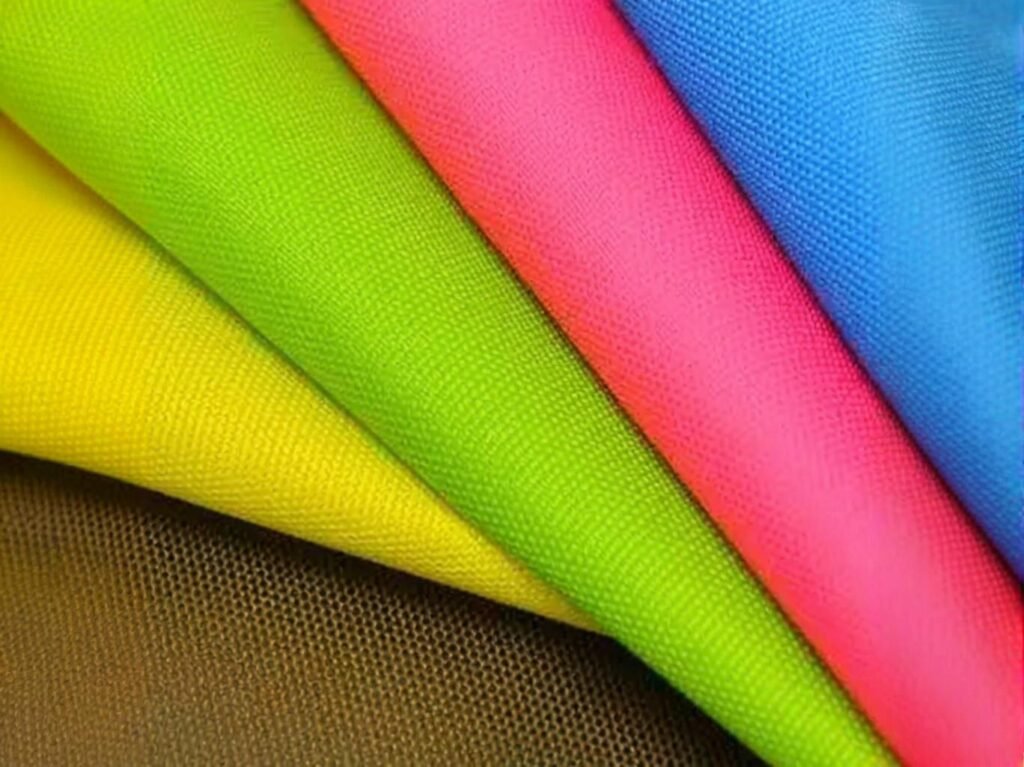
The textile industry is no stranger to wear and tear. Whether you’re producing backpacks, uniforms, or upholstery, one of the most important questions you must ask is: How long will this fabric last under real-world conditions? Abrasion resistance is at the heart of that discussion, and the Martindale test is the industry’s go-to benchmark. But how do materials like Oxford fabric and Polyester fabric perform when put to the test? In Martindale abrasion resistance tests, high-denier Polyester typically outperforms standard Oxford in terms of sheer cycle count. However, Oxford fabrics with reinforced weaves and coatings can close the gap significantly. The results depend not only on the fiber but also on weave type, finishing, and usage context.
This article will compare the abrasion performance of Oxford and Polyester based on Martindale test results, dive deep into structural differences, and help B2B buyers interpret results in real-world applications like luggage, tactical gear, and uniforms.
Just imagine ordering 10,000 school bags that begin fraying within months, only to realize your supplier didn’t even test the fabric’s abrasion rating. One client we worked with avoided this disaster by switching to a custom-coated Oxford 600D we recommended, backed by real Martindale data. The result? Zero returns over 12 months.
Now let’s dive into what the Martindale test is and why it should matter to every serious buyer.
What Is the Martindale Abrasion Resistance Test and Why Does It Matter?
The Martindale test measures how well a fabric resists wear by rubbing it against a standard abrasive surface in a controlled, circular motion until it shows signs of damage. The result, expressed in cycles, helps predict fabric lifespan.
The Martindale method (ISO 12947-2) is a global standard used by manufacturers and brands to quantify durability. The test involves placing the fabric sample under a specified pressure, then rotating it against an abrasive surface until visible wear or thread breakage occurs.
How the Martindale Test Works
1. Martindale Test Setup
| Component | Description |
|---|---|
| Abrasive Material | Typically wool or sandpaper, depending on standard |
| Load Applied | Varies: 9 kPa for apparel, 12 kPa for upholstery |
| Test Movement | Lissajous figure (multi-directional circular) |
| Result Measured in | Number of abrasion cycles before breakdown |
2. Why Martindale Matters for B2B Buyers
- Helps forecast product longevity
- Reduces customer complaints and returns
- Supports product positioning (e.g., “durable,” “heavy-duty”)
- Helps justify price in high-end markets
3. Martindale Results Guide
| Use Case | Minimum Cycles Recommended |
|---|---|
| Casual apparel | 10,000+ cycles |
| Office furniture | 30,000+ cycles |
| Outdoor gear / Bags | 40,000–100,000+ cycles |
| Industrial uniforms | 70,000+ cycles |
A 600D Oxford with PU coating may pass 25,000 cycles, while a ballistic 1680D polyester could exceed 100,000.
How Do Oxford and Polyester Fabrics Differ in Structure and Usage?
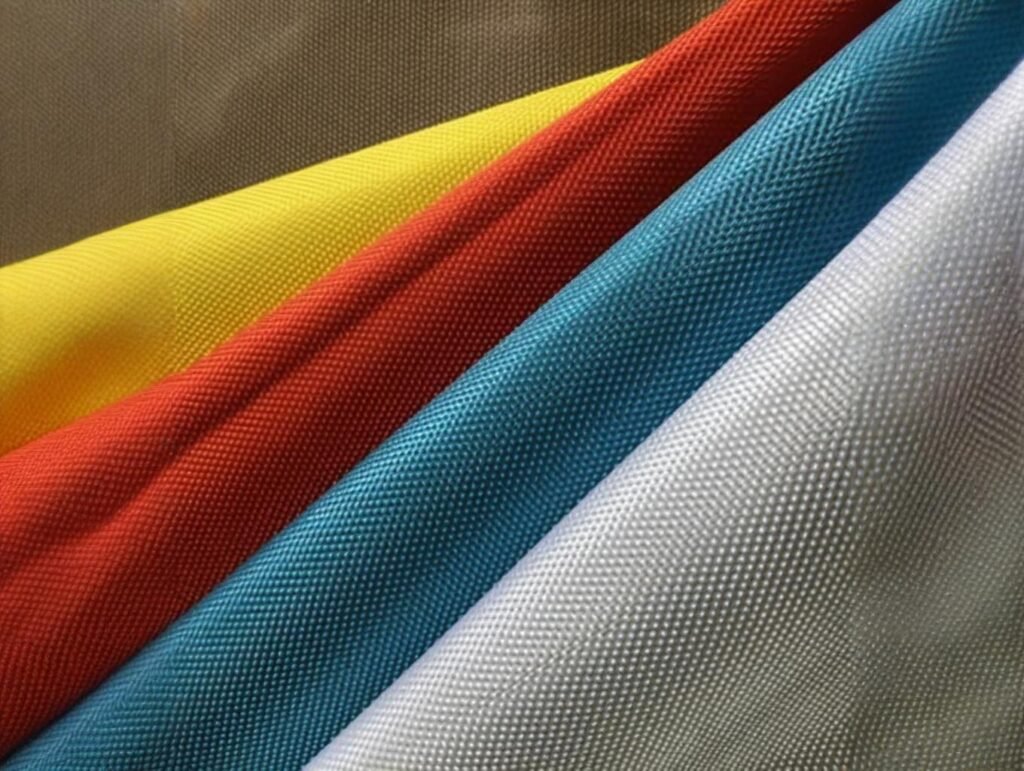
Oxford is a type of weave, while Polyester is a fiber. Oxford fabrics can be made from polyester, cotton, or blends. Polyester is a synthetic fiber known for high tensile strength and hydrophobic properties, making it ideal for durability-focused applications.
Oxford and Polyester are not apples-to-apples. You’ll often find “Oxford Polyester” in fabric descriptions—highlighting the weave-fiber combo. However, their structural distinctions impact abrasion resistance in important ways.
Oxford vs Polyester – A Technical Comparison
1. Oxford Fabric Overview
- Weave Type: Plain basket weave (often 2×2)
- Fiber: Can be cotton, polyester, or blends
- Application: Shirts, bags, covers, uniforms
- Common Denier: 210D, 420D, 600D, 1680D
- Finish: Often PU/PVC coated for waterproofing
2. Polyester Fabric Overview
- Weave Type: Varies (plain, twill, ripstop, etc.)
- Fiber: 100% synthetic polyester
- Application: Outdoor gear, tents, sportswear
- Common Denier: 150D–1680D+
- Finish: Can be treated for UV resistance, flame retardant, etc.
| Feature | Oxford Fabric | Polyester Fabric |
|---|---|---|
| Fiber Origin | Natural/synthetic blend | 100% synthetic |
| Structure | Basket weave | Depends on construction |
| Flexibility | Moderate | High |
| Common Applications | Bags, uniforms, shirt fabric | Outdoor gear, technical wear |
| Abrasion Resistance | Medium | High |
Oxford is not a fiber, but a weave type. You can have Polyester Oxford, Nylon Oxford, or Cotton Oxford—each with different performance.
Which Fabric Shows Higher Martindale Cycles in Lab Testing—Oxford or Polyester?
In lab tests, high-denier polyester fabrics (e.g., 1000D, 1680D) typically outperform standard Oxford fabrics in Martindale abrasion resistance. However, coated Oxford polyester can rival or exceed uncoated plain weaves.
Polyester, being a synthetic fiber with a high melting point and tensile strength, often achieves abrasion resistance ratings of 40,000 to over 100,000 Martindale cycles, depending on construction and finishing. Oxford fabrics, especially those made with cotton or lower-denier blends, may yield 20,000 to 40,000 cycles, though PU- or PVC-coated Oxford polyesters can match higher ranges.
Real Test Data – Oxford vs Polyester
1. Martindale Test Results by Fabric Type
| Fabric Type | Denier | Coating | Martindale Result (Cycles) |
|---|---|---|---|
| Polyester 600D | 600 | None | \~40,000 |
| Polyester 1680D Ballistic | 1680 | PU | \~100,000+ |
| Oxford 420D Polyester | 420 | PU | \~30,000–45,000 |
| Oxford 600D Polyester | 600 | PU | \~45,000–60,000 |
| Oxford Cotton (shirt) | N/A | None | \~10,000–20,000 |
Martindale tests often run until the fabric exhibits visible wear (rub-through or thread break). The higher the number, the longer-lasting the fabric is in high-friction applications.
2. Factors That Boost Martindale Performance
- Fiber strength: Synthetic fibers like polyester resist breakage better than natural fibers.
- Weave density: Tighter weaves perform better under abrasion.
- Denier: Higher denier means thicker yarns, which translates to more durability.
- Coatings: PU, PVC, and TPU coatings dramatically improve abrasion scores.
3. When Oxford Outperforms Polyester
Oxford with high-denier polyester yarn and double PU coating can sometimes outperform standard polyester weaves. Also, Polyester Oxford is a hybrid that blends Oxford weave strength with polyester fiber endurance.
Do Fabric Weave and Denier Affect Abrasion Resistance in Oxford vs Polyester?
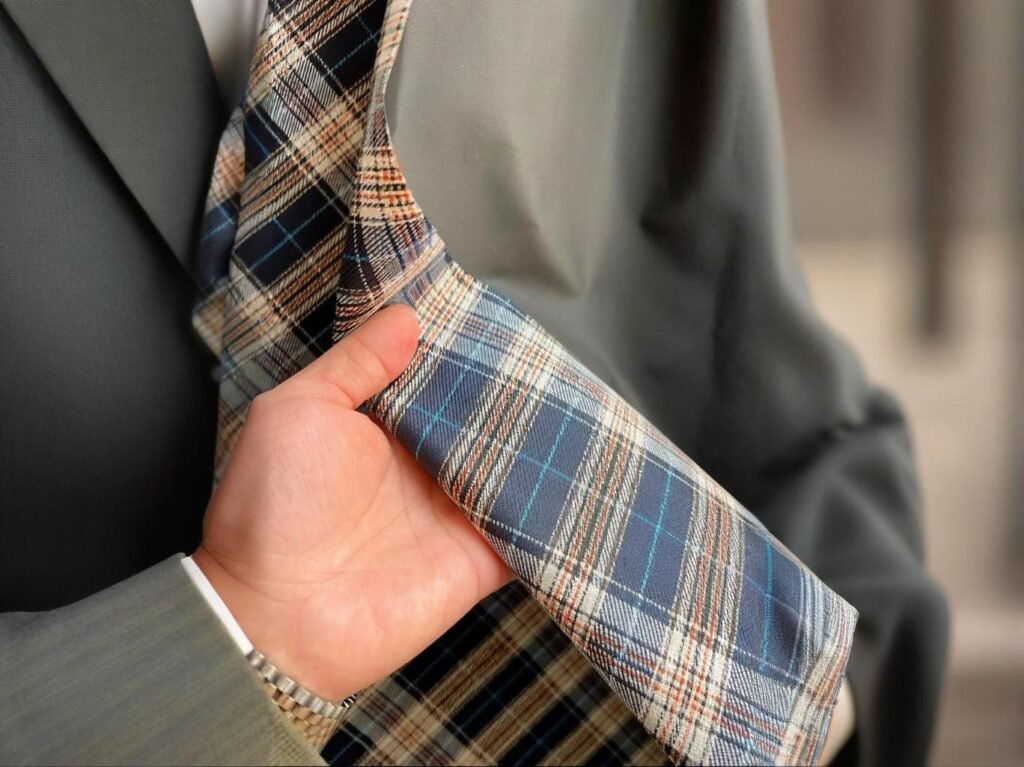
Yes, both weave structure and yarn denier significantly influence a fabric’s abrasion resistance. Denser weaves and higher denier yarns tend to resist wear better in Martindale testing, especially under high-pressure conditions.
When buyers look at specs like “Oxford 600D PU-coated,” they’re getting a combination of factors: the weave type (Oxford), the yarn thickness (600 denier), and the protective layer (PU coating)—all of which influence performance.
Dive Deeper: Dissecting Weave and Denier Effects
1. Understanding Denier in Practical Terms
| Denier Value | Yarn Thickness | Common Use Case |
|---|---|---|
| 210D | Lightweight | Umbrellas, thin linings |
| 420D | Midweight | Drawstring bags, basic packs |
| 600D | Standard durability | School bags, promotional backpacks |
| 1000D–1680D | Heavy-duty | Military gear, tactical backpacks |
Higher denier means thicker, more abrasion-resistant yarns. 600D polyester is the industry workhorse for durable yet affordable fabrics. 1680D ballistic polyester, by contrast, is used in luggage and motorcycle gear.
2. How Weave Type Influences Results
| Weave Type | Description | Abrasion Resistance |
|---|---|---|
| Plain Weave | Simple over-under pattern | Low–Medium |
| Oxford Weave | Basket weave (often 2×2) | Medium |
| Twill Weave | Diagonal ribs (like denim) | Medium–High |
| Ripstop Weave | Reinforced grid with stronger fibers | High |
The Oxford weave performs well due to its basket structure, but ripstop or twill polyester may offer greater durability in ultra-demanding environments.
3. Recommended Combinations by Application
| Application | Recommended Fabric |
|---|---|
| Promotional Tote Bags | 420D Oxford Polyester |
| School Backpacks | 600D Oxford or Twill Polyester |
| Outdoor Gear | 1000D Ripstop Polyester |
| Industrial Workwear | 1680D Ballistic Polyester |
Tip for Buyers: Always ask your supplier for Martindale results, not just denier or GSM. A 600D polyester with poor weave or no coating may underperform a 420D coated Oxford.
How Are Martindale Abrasion Results Interpreted in B2B Use Cases?
Martindale test results help B2B buyers predict real-world fabric longevity in specific applications. Higher cycle counts suggest better wear resistance, but test values should always be interpreted in context—considering fabric weight, usage conditions, and expected lifespan.
Many B2B purchasers mistakenly treat Martindale scores as a one-size-fits-all benchmark. But 40,000 cycles in a hotel cushion is not the same as 40,000 cycles on a delivery backpack. It’s about matching durability to duty cycle—the expected frequency and intensity of fabric use.
Martindale Interpretation by Sector
1. Apparel Industry
- Standard: 10,000–20,000 cycles
- Why It Matters: Shirts and uniforms face moderate daily friction.
- Example: Cotton Oxford shirts used in hotels usually suffice with 15,000+ cycles.
2. Bag Manufacturing
- Standard: 30,000–50,000+ cycles
- Why It Matters: Friction from movement, corners, zippers, and daily handling.
- Example: School backpacks with 600D Oxford need at least 35,000 cycles to avoid early wear complaints.
3. Furniture Upholstery
- Standard: 30,000–100,000+ cycles
- Why It Matters: Seating is subject to repeated pressure and body friction.
- Example: Hotel chairs or train seats often require 80,000+ cycles for compliance.
4. Military & Tactical Gear
- Standard: 100,000+ cycles
- Why It Matters: Equipment must withstand terrain friction, loads, and extreme wear.
- Example: 1680D ballistic polyester used in military duffels often tests at 120,000 Martindale cycles.
| Sector | Suggested Martindale Range | Example Fabric |
|---|---|---|
| Uniform Shirts | 10,000–20,000 | Cotton Oxford |
| Travel Backpacks | 40,000–60,000 | PU-coated 600D Polyester |
| Office Upholstery | 60,000–80,000 | Twill Polyester Blend |
| Military Equipment | 100,000+ | Ballistic 1680D Polyester |
In one real case, a logistics company replaced their 420D Oxford courier bags with 1000D polyester after Martindale tests showed early wear at high-stress points. The result: bag complaints dropped by 85% within 6 months.
What Industry Standards Define “High Abrasion Resistance”?
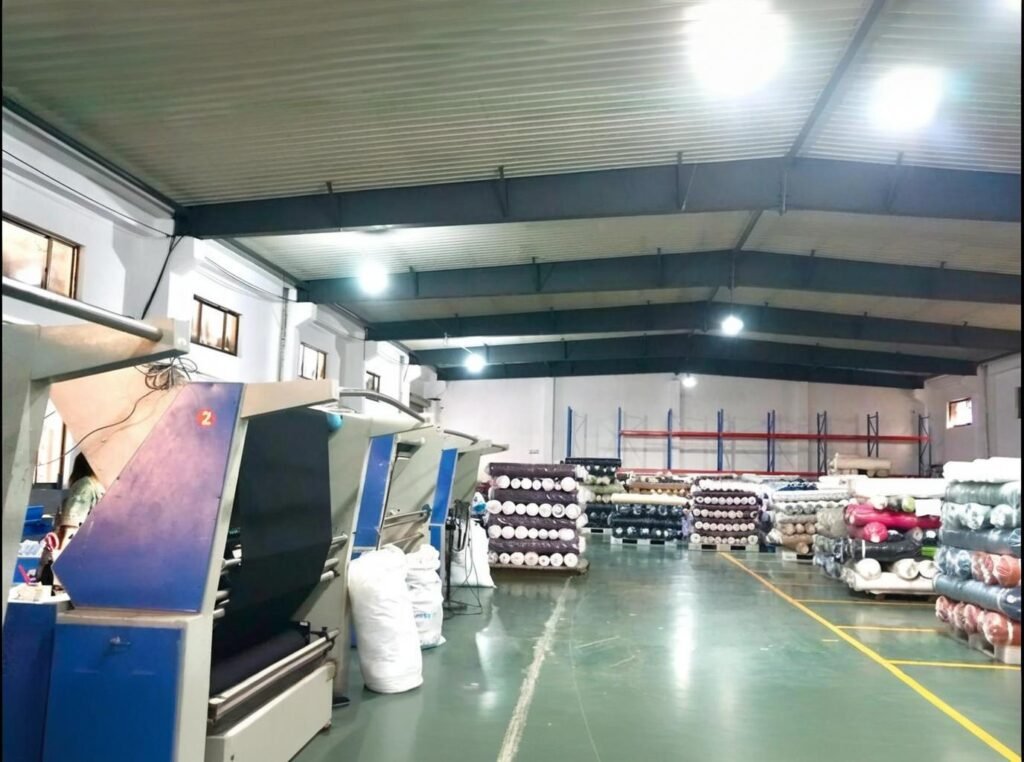
Globally, industries use the Martindale test to benchmark what counts as high abrasion resistance. Generally, fabrics above 50,000 cycles are considered suitable for high-friction environments, while over 100,000 cycles is often labeled “extreme durability.”
While there’s no single international definition, many countries and brands refer to guidelines from ISO 12947, BS EN 14465, or ASTM D4966.
Defining High Durability Across Industries
1. Global Standards at a Glance
| Standard | Abrasion Rating Thresholds |
|---|---|
| ISO 12947-2 | International benchmark (used for upholstery) |
| EN 14465 | Europe-specific standard for furniture fabrics |
| ASTM D4966 | US version of Martindale testing |
2. Durability Rating Levels (Martindale Cycles)
| Durability Level | Cycles | Common Uses |
|---|---|---|
| Light-duty | <15,000 | Dress shirts, suits, drapes |
| Medium-duty | 15,000–40,000 | Casual wear, basic bags |
| Heavy-duty | 40,000–80,000 | School bags, outdoor apparel |
| Extra heavy-duty | 80,000–100,000+ | Furniture, industrial gear |
| Extreme durability | 100,000+ | Military gear, hard-shell luggage |
3. Certifications & Labels That Reference Martindale
- OEKO-TEX® Standard 100: May include abrasion testing in their criteria for upholstery fabrics.
- ISO/EN Technical Data Sheets: Usually include Martindale as a required durability line item.
- Commercial tenders (hotels, public transit): Often specify minimum Martindale thresholds.
If you’re ordering from Chinese fabric suppliers, ask them to share Martindale test reports (PDF) from third-party labs like Intertek or SGS. This builds trust and proof of quality.
Is Oxford or Polyester More Durable for High-Wear Products Like Luggage and Workwear?
For high-wear products like luggage and workwear, coated polyester—especially ballistic or ripstop polyester—tends to be more abrasion-resistant and durable than standard Oxford fabric. However, Polyester Oxford combines the best of both: the Oxford weave with the strength of polyester yarn.
The key lies in both fiber and construction. Oxford is a type of weave, not a material—so when someone refers to “Oxford fabric,” they could mean cotton Oxford (low durability) or polyester Oxford (much stronger). In high-wear sectors, raw polyester in denier counts over 600D, combined with special weaves or coatings, consistently outperforms cotton or blended Oxford materials.
Use Cases by Material Type
1. Workwear
- Best Option: 600D Polyester with PU backing
- Why: Withstands rubbing against equipment, kneeling, washing cycles.
- Case Study: A German construction brand replaced 420D Oxford aprons with 1000D polyester and extended the product lifespan by 60%.
2. Luggage & Duffel Bags
- Best Option: 1680D Ballistic Polyester
- Why: Handles drag, weight, stacking in airports.
- Note: Cotton Oxford fails quickly due to tearing at stress points.
3. Tactical and Outdoor Gear
- Best Option: Ripstop Polyester or Nylon (PU/PVC coated)
- Why: Combines abrasion resistance and tear resistance under tension.
| Application | Recommended Fabric | Martindale Range | Denier |
|---|---|---|---|
| Uniform Pants | 600D Coated Polyester | 50,000–80,000 | 600D |
| Roller Luggage | 1680D Ballistic Polyester | 100,000+ | 1680D |
| Military Backpacks | PU-Coated Ripstop Polyester | 120,000+ | 1000D+ |
| Hotel Aprons | 600D Polyester Oxford | 40,000–60,000 | 600D |
How Can Buyers Use Martindale Data to Choose the Right Fabric for Their Products?
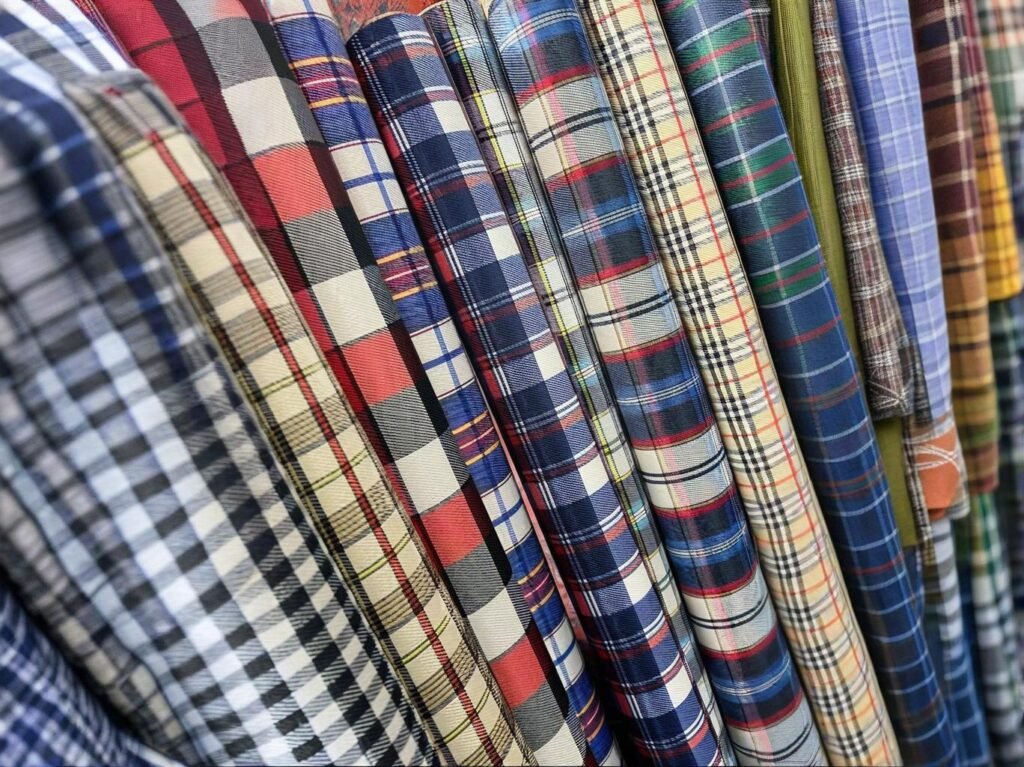
Buyers should use Martindale data as a starting point to compare durability across suppliers, but it should always be interpreted in context—factoring in the product type, coating, weave, fiber composition, and real-world usage expectations.
For instance, a 600D Oxford fabric with a Martindale score of 50,000 may be ideal for tote bags but underperform in tactical gear. The goal is to match the Martindale score to the application’s friction profile, whether it’s daily abrasion (uniforms) or high-impact drag (luggage).
Martindale Score as a Decision-Making Tool
1. Step-by-Step Guide for Buyers
- Identify Product Usage Scenario (e.g., daily carry bag, outdoor tactical gear, hotel uniforms)
- Request Fabric Specifications Including denier, GSM, weave type, coating type, and Martindale test results.
- Match Durability to Duty Cycle Use a benchmark table to compare application vs. Martindale range.
- Test Samples Conduct a test order or lab test if unsure; don’t rely only on sales descriptions.
- Request Documentation Ask for ISO/ASTM-compliant Martindale test reports to ensure credibility.
2. Common Pitfalls
- Relying Only on Denier: High denier does not always mean higher abrasion resistance if weave and coating are poor.
- Not Asking for Lab Reports: Supplier claims may be inflated. Look for Intertek, SGS, or BV test results.
- Overpaying for Overkill: 100,000-cycle fabric may be unnecessary for 6-month promotional tote bags.
3. Pro Tip for OEM/ODM Buyers
Use Martindale specs as part of your technical specification sheet during RFQ (Request for Quotation). This weeds out low-quality suppliers early and ensures better long-term sourcing partnerships.
Ready to Source High-Abrasion Fabrics?
At SzoneierFabrics, we specialize in custom Oxford and polyester materials with verified Martindale scores and 100% quality assurance. Whether you’re producing tactical backpacks, luxury luggage, or workwear, we offer:
- ✔ Free samples
- ✔ Fast prototyping
- ✔ Low MOQ (starting at 50m)
- ✔ Full customization (coating, weight, color, weave)
📩 Contact us today to get a quote or request test data. Let Szoneier help you develop abrasion-resistant fabric solutions tailored to your exact needs.

